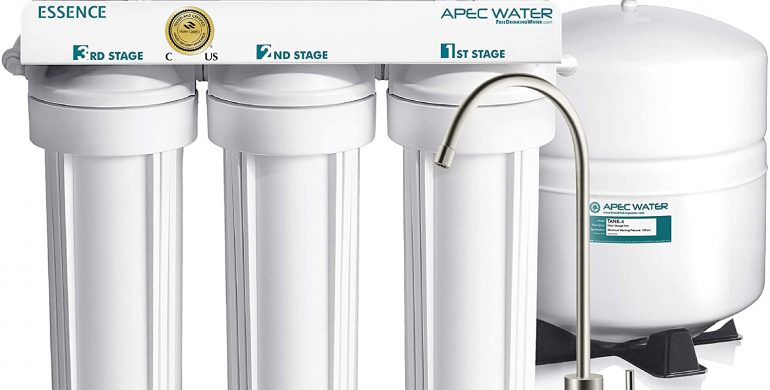
RO system stands for reverse osmosis system. It has a partially penetrable barrier called membrane (also considered as heart of the RO system) to remove unwanted chemical species, ions, molecules, bacteria and larger particles from drinking water.
Water naturally flows from the filtered side (an area of low concentration) through a membrane, to input polluted waterside (an area of high concentration). This is called osmosis. By this way filtration will not be possible since we need water to flow from polluted side to faucet side. So, a system in which an external force applied which drives the water naturally from the polluted side to less polluted side is called reverse osmosis (RO) system.

The traditional membrane filtration has pores of 0.01 micrometres or larger. However, RO membrane uses Nanofiltration with pores 0.001 micrometres in size or smaller.
Unlike traditional filters, RO system can also remove dissolved chemical species, molecules and ions biological species like bacteria from water. So, nowadays it is commonly used for commercial, industrial and residential purposes as it provide more pure water than traditional filters.
As a result, the solute i.e. unwanted particles are collected on the pressurized side of the system and the pure solvent i.e. pure water gets passed to the other side. This membrane must not allow unwanted particles to move through its pores (holes) even if they are dissolved in the water, but should allow smaller components of the solution (such as solvent molecules, i.e., water) to get passed through it.
How does a RO system work?
A reverse osmosis system removes sediment, chlorine, larger molecules from water with a pre-filter so that it can reduce the work pressure of membrane. Then it applies pressure to water to pass through a RO membrane to remove dissolved solids. After water exits the RO membrane, it is stored in a vessel called storage tank. Finally, it passes through a post-filter to polish the drinking water as soon as we open the tap. Depending on the number of pre-filters and post-filters, RO systems have various stages.
- Ways to prolong the lifespan of electrical systems - July 14, 2024
- How to unclog a shower drain - July 11, 2024
- Different types of Chiller system. - July 8, 2024


